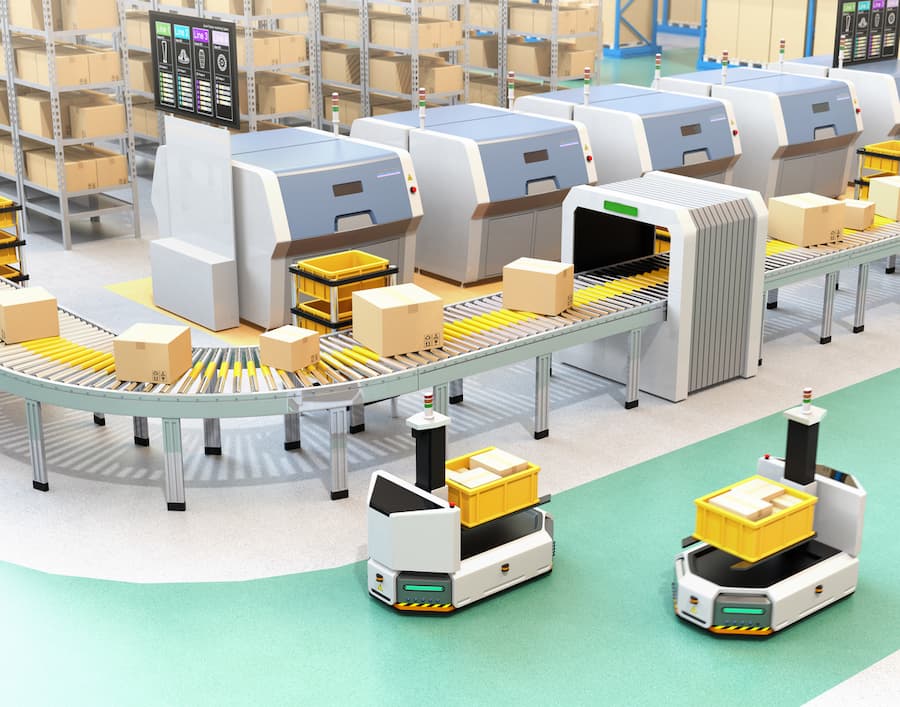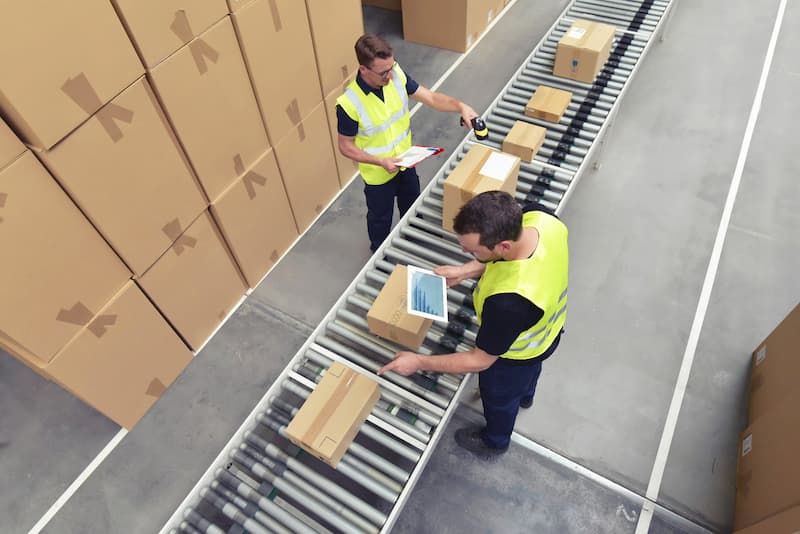The increasing demand for organised warehouse space has made the sector increasingly competitive, with many businesses exploring how to increase their efficiency and stand out as the best choice. The most popular investment to achieve this has been automation. Many areas can be automated in a warehouse, such as order picking, to significantly increase fulfilment speed without losing accuracy. Read on to discover the benefits of automation in warehouse order picking and warehouse management.

Why Automate Warehouse Order Picking?
Order picking is an endless loop of incoming and outgoing orders that must be fulfilled with speed and accuracy. Unfortunately, manual order picking has been outclassed by the numerous ways to the many automated solutions to choose from. For example, manual order picking takes significantly longer to complete without automation, as your team will need to verify that they are shipping the correct orders with no mistakes.
Fortunately, there are many methods of automating warehouse operations that provide significant benefits in this competitive sector. Still, none of them will work without high-quality barcode labels for these systems to track.
Why are Accurate Barcodes Essential?
Barcode systems for warehouses are an essential function of any automation. Each barcode label will be a unique identifier for the box and its contents that an automated warehouse system can read. Some businesses will heavily invest in automation and use robotic assistants to find and collect these boxes at the appropriate time. Alternatively, your team members can be alerted to the relevant box’s location and even have a route revealed on their mobile computers.
Depending on the barcode symbology, these labels will provide a wealth of information about the order, which, thanks to gateway portals and other automated scanning systems, ensure its accurate storage and fulfilment. Some barcode designs will contain limited data on the contents, whilst more complex ones will include essential travel data such as destination and storage conditions.

Reasons to invest in a Barcode System for an Automated Warehouse
- MRO Inventory: Maintenance, repair and operation inventory relies on an effective barcode system as the assets they store need to be monitored as parts of an eventual complete application. Identifies such as asset tags, you can build a digital documentation system and streamline your MRO.
- eCommerce: If your vendors or retailers purchase directly from your storage area, you must have an accurate barcode system to track these consumer products. This way, every action is accounted for, and your warehouse’s capabilities are protected.
- Stock Management: With incoming and outgoing orders constantly moving, manually tracking these actions will lead to delays, inaccuracies and failed orders. A barcode stock system helps monitor stock levels, keeps your entire team on the same page regarding order fulfilment, and eliminates mistakes.
Different Levels of Automation
Automation is not an all-or-nothing process; warehouse managers can scale their automation investment to suit their company’s current needs. In addition, there are staggered levels for applying automation in a warehouse environment ranging from administration elements to order fulfilment.
Intro-Automated Warehouses
Initially, you can start automating warehouse order picking by investing in a wireless inventory tracking system or other stock control solution to eliminate outclassed paper-based systems. This initial step will enable your staff and equipment to record, track and retrieve any stored items much faster than if they had to input them manually.
Fully Automated Warehouses
Fully automated warehouses replace manual handling with automated transport systems such as robotics and conveyor systems. For example, pallet or box conveyors will move items to their assigned area and assess the travelling boxes with static warehouse barcode scanners mounted on the conveyor. Machine learning, or even AI, is monitored by a limited staff as the automated system performs most of the day’s operations, such as order picking.
Semi-Automated Warehouses
Semi-automated warehouses combine automated storage and management. Manual operations will be necessary to complete tasks, but a significant amount of the operations will be automated through digital database systems or physical automated transport equipment. Most facilities choose a custom semi-automated system tailored to their warehouse’s focus. For example, facilities with extreme environmental control, such as refrigerated areas, will need durable equipment, such as vehicle-mounted truck terminal tablets (VMT), to provide the necessary data capture reliability in any conditions.

Examples of Warehouse Automation
Most automation operations can be identified as digital or physical processes. An effective warehouse management system will bring these two worlds together and significantly increase the speed and accuracy of your business’s order picking.
- Physical automation: Physical examples of warehouse automation will range from mobile computers connected to wireless digital systems around your facility to the implementation of robotic assistance.
- Digital Automation: wireless digital computer systems with programmed alerts will update your database as your team or equipment changes the status of your warehouse storage. This may seem like minor automation, but it will provide outstanding control for warehouse managers as they will have detailed information on their current status and can make better-informed decisions.
Automation brings many benefits to businesses, especially warehouse fulfilment operations. Automating basic tasks enables your team members to be upskilled into tasks that cannot currently be automated. This helps your team use their skills more and increase the speed at which those basic operations are completed.

Custom Barcode Labels from GSM Barcoding
At GSM Barcoding, we take great pride in our accurate bespoke label printing software services, scanners and barcode printers. We have provided reliable barcode labels for many warehouses with a broad range of storage focuses. For example, our Sage 50 stock management allows you to track and manage your warehouse stock in real time, giving you more accurate data and improving supply chain efficiency. Contact us today to discover how we can assist your business in moving to automated order picking.


















